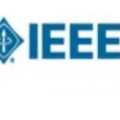The recent popularity of deep neural networks (DNNs) has generated a lot of research interest in performing DNN-related computation efficiently. However, the primary focus is usually very narrow and limited to (i) inference -- i.e. how to efficiently execute already trained models and (ii) image classification networks as the primary benchmark for evaluation. Our primary goal in this work is to break this myopic view by (i) proposing a new benchmark for DNN training, called TBD (TBD is short for Training Benchmark for DNNs), that uses a representative set of DNN models that cover a wide range of machine learning applications: image classification, machine translation, speech recognition, object detection, adversarial networks, reinforcement learning, and (ii) by performing an extensive performance analysis of training these different applications on three major deep learning frameworks (TensorFlow, MXNet, CNTK) across different hardware configurations (single-GPU, multi-GPU, and multi-machine). TBD currently covers six major application domains and eight different state-of-the-art models. We present a new toolchain for performance analysis for these models that combines the targeted usage of existing performance analysis tools, careful selection of new and existing metrics and methodologies to analyze the results, and utilization of domain specific characteristics of DNN training. We also build a new set of tools for memory profiling in all three major frameworks; much needed tools that can finally shed some light on precisely how much memory is consumed by different data structures (weights, activations, gradients, workspace) in DNN training. By using our tools and methodologies, we make several important observations and recommendations on where the future research and optimization of DNN training should be focused.
翻译:最近深心神经网络(DNNs)的广度引起了许多对高效进行DNN相关计算的研究兴趣。然而,主要重点通常非常狭窄,而且仅限于(一) 推论 -- -- 即如何高效率地执行已经受过培训的模型和(二) 图像分类网络,作为评价的主要基准。我们这项工作的首要目标是通过以下方式打破这种近视观点:(一) 提出DN培训的新基准,称为TBD(TBD是DNS培训基准的简称),使用一套具有代表性的DNNNN模式模型,这些模型涉及广泛的机器学习应用:图像分类、机器翻译、语音识别、目标探测、对抗网络、强化学习等。然而,主要重点是:(二) 如何高效执行已经培训的模型,作为评价的主要基准(TensorFlow、MXNet、CNTNTKKK) 。 这项工作的首要目标是:(一) 提出DNNNND培训的新基准(TBD),目前包括六大应用领域和八种不同的最新观察模式,包括:图像分类分类、机器培训中的许多应用领域和八种新的应用领域。 我们为分析业绩分析业绩分析做了新的工具的新的工具,为这些工具,为这些工具的研后,我们为这些工具的研读分析提出了新的工具,我们为这些模型和指标分析提供了新的工具,我们为这些工具的系统、进行新的工具的研读、进行新的工具的研读分析,还进行了新的工具,我们进行新的工具的研后,并使用了新的工具的研读、进行新的工具的研的研后、新工具,在分析,为这些模型和指标分析,还进行了新的工具的研的研的研的研后工具的研的研的研的研的研的研的研后工具的研的研的研的研的研的研的研的研的研的研的研的研的研的研的研,在分析,在分析,在分析,在分析,在分析中,在分析中,在分析中,在分析中,在分析中,在分析中,在分析中,在分析中,在分析中,在分析中,在分析中,在分析中,在分析中,在分析中,在分析中,在分析中,在分析这些模型中,在分析中,



